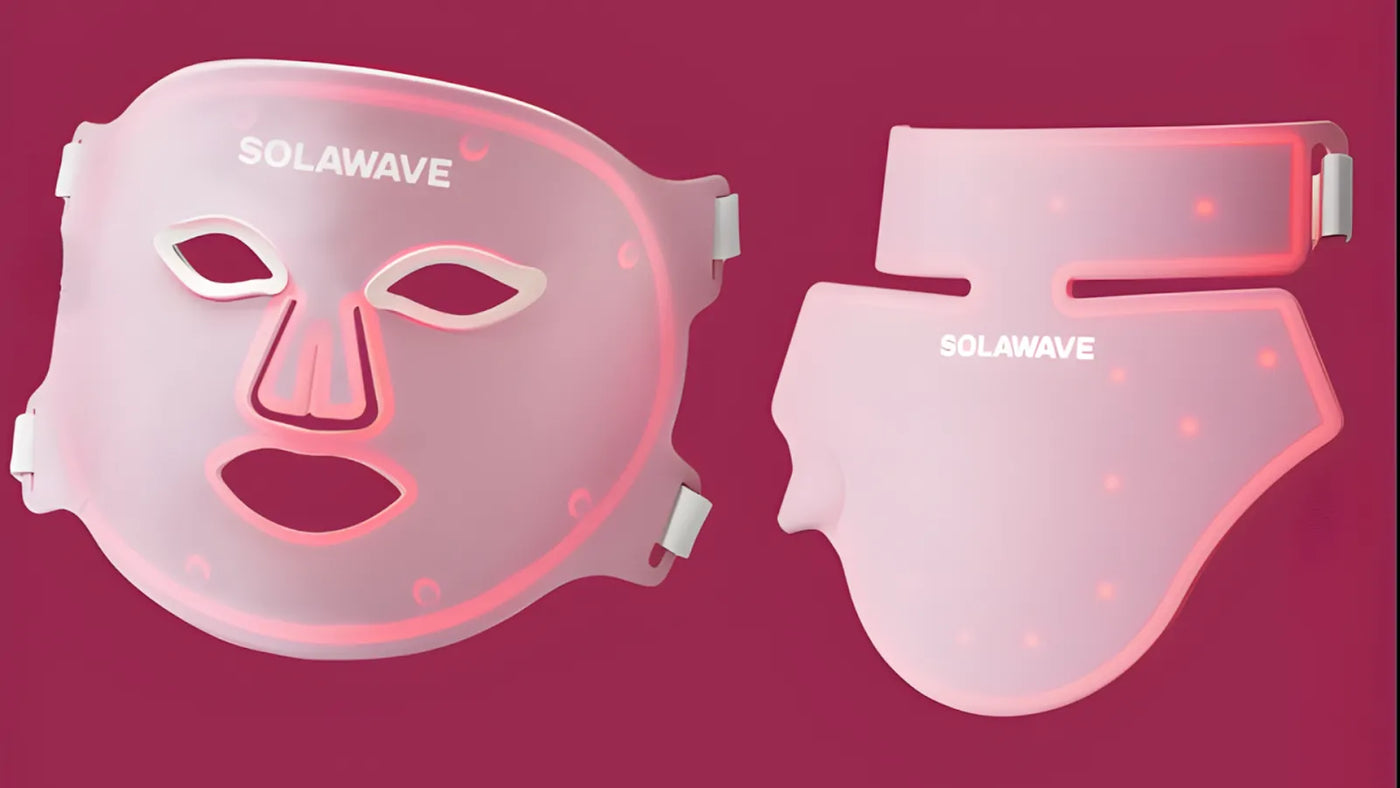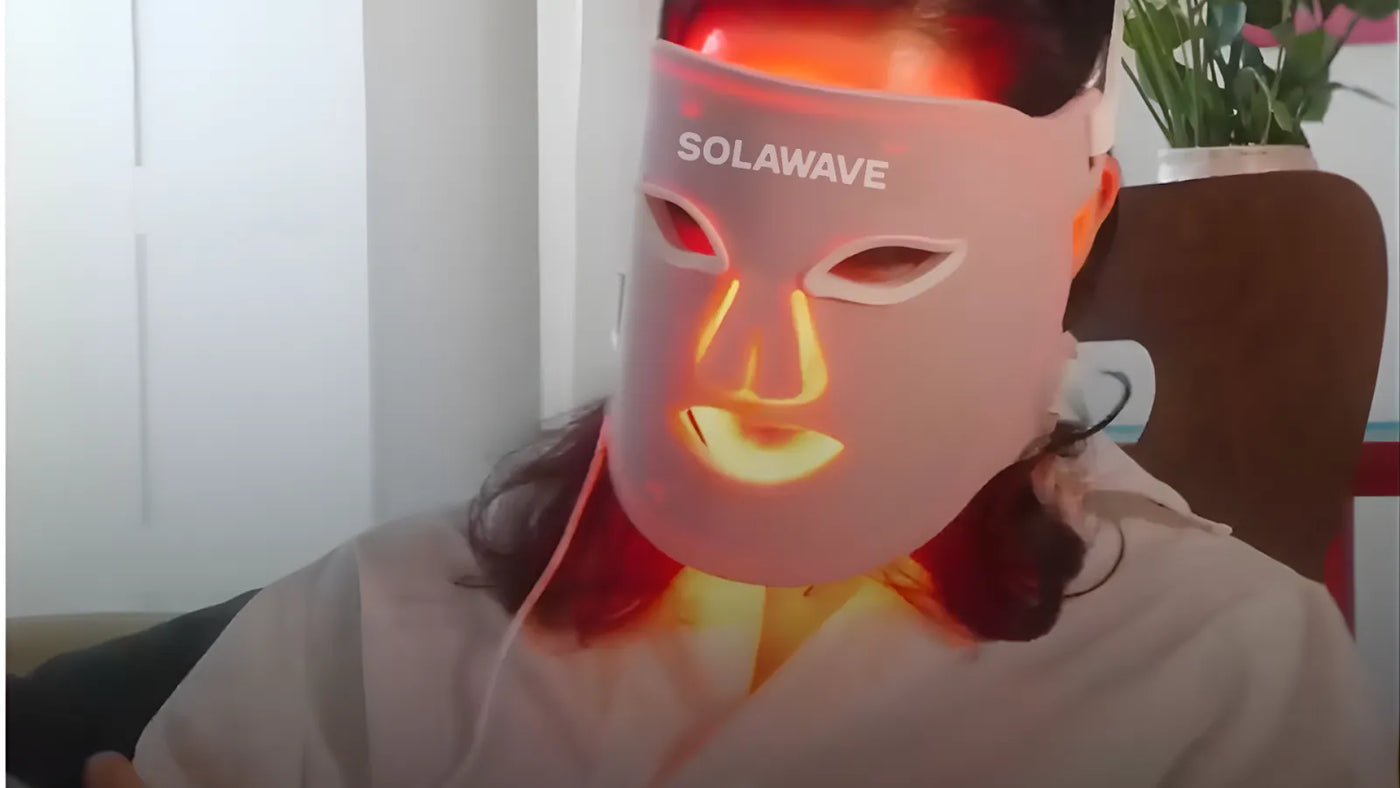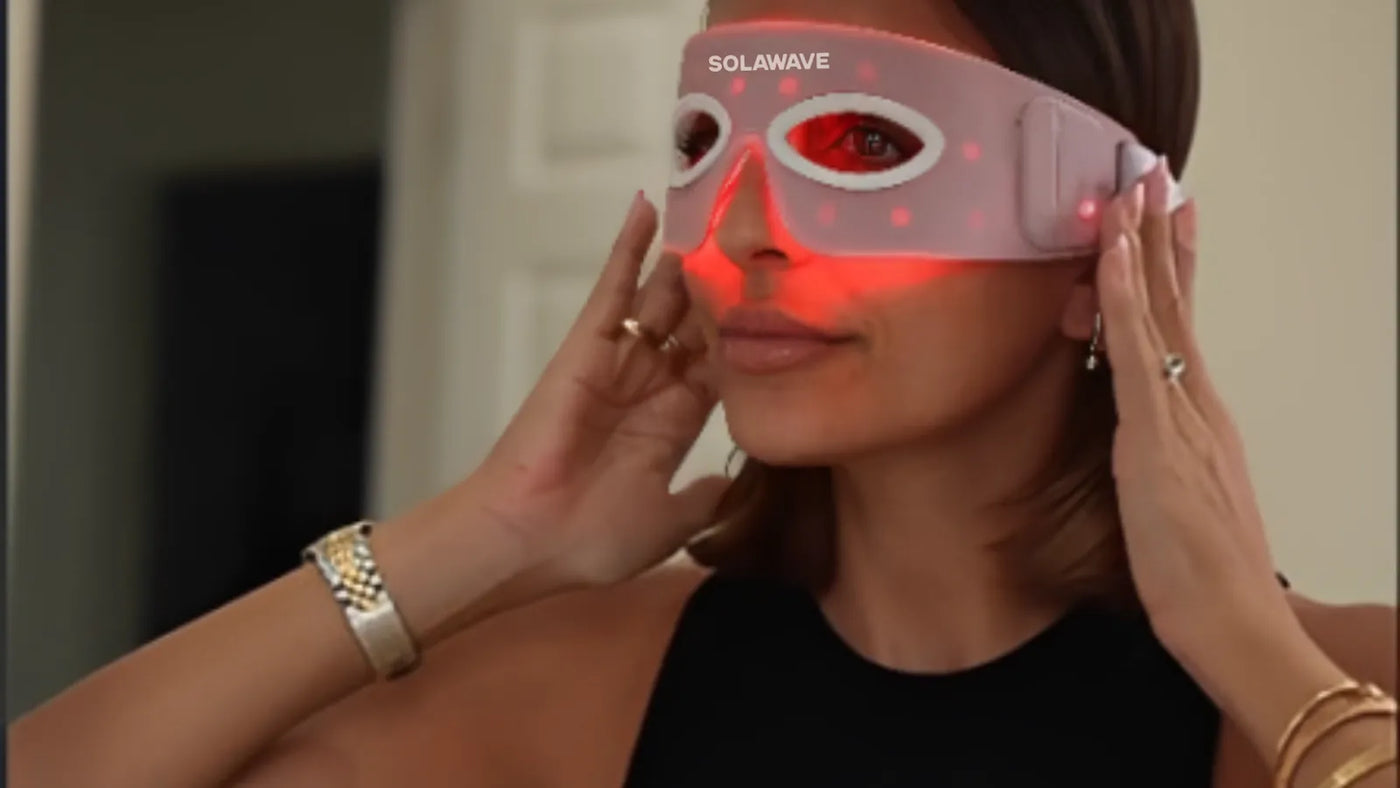

Red Light Therapy for Arthritis: Can It Help?
Arthritis is a common condition that affects millions of people, often causing joint pain, stiffness, and reduced mobility. These symptoms can make everyday tasks challenging, impacting your quality of life and overall well-being.
Fortunately, there are many different treatments and therapies available to help manage arthritis symptoms and support joint health. From prescription medications and physical therapy to plant-based remedies and lifestyle modifications, you have a wide range of options to explore.
Among these supportive approaches, red light therapy has gained attention as a potential tool for easing discomfort and promoting recovery. While it’s not a cure or treatment for arthritis, red light therapy may offer additional support as part of a comprehensive arthritis management plan. Here's what to know.
What Exactly Is Arthritis?
Arthritis is a broad term used to describe a group of conditions that cause inflammation, pain, and stiffness in the joints. It can affect people of all ages, though it is more common as you get older. There are over 100 different types of arthritis, but the most common forms are osteoarthritis and rheumatoid arthritis.
Osteoarthritis is the most prevalent type, often referred to as “wear-and-tear” arthritis. It occurs when the protective cartilage that cushions the ends of your bones gradually breaks down, leading to pain, swelling, and reduced joint flexibility. Osteoarthritis typically affects weight-bearing joints such as the knees, hips, and spine, but it can also impact the hands and other areas.
Rheumatoid arthritis is an autoimmune condition, meaning your immune system mistakenly attacks the lining of your joints. This leads to inflammation, swelling, and eventually joint damage. Rheumatoid arthritis can affect multiple joints at once and may also cause fatigue, fever, and other systemic symptoms.
Other types of arthritis include psoriatic arthritis, gout, and juvenile arthritis, each with its own unique causes and symptoms.
Common symptoms of arthritis include:
-
Persistent joint pain and tenderness
-
Swelling and stiffness, especially in the morning or after periods of inactivity
-
Reduced range of motion and flexibility
-
Warmth or redness around affected joints
-
Fatigue and general discomfort
Living with arthritis can present daily challenges. Simple activities like walking, climbing stairs, or even opening jars can become difficult. The pain and stiffness can also impact your mood, sleep, and overall quality of life.
Because arthritis is a complex and often progressive condition, a comprehensive treatment approach is essential. Managing arthritis typically involves a combination of therapies tailored to your specific needs. This might include medications, physical therapy, lifestyle modifications, and supportive therapies. Working closely with your healthcare provider ensures you receive a personalized plan that addresses both your symptoms and your long-term joint health.
Conventional Treatments for Arthritis
When it comes to managing arthritis, prescription medications are often a key part of the treatment plan. These medications are designed to reduce pain, control inflammation, and slow the progression of joint damage.
The most commonly prescribed medications include:
-
NSAIDs (Nonsteroidal Anti-Inflammatory Drugs): These drugs, such as ibuprofen and naproxen, help reduce inflammation and relieve pain. They are often used for both short-term and long-term symptom management. While effective, NSAIDs can cause side effects like stomach irritation, ulcers, and increased risk of heart problems, especially with prolonged use.
-
DMARDs (Disease-Modifying Antirheumatic Drugs): Medications like methotrexate and sulfasalazine are used primarily for autoimmune forms of arthritis, such as rheumatoid arthritis. DMARDs work by suppressing the immune system to prevent further joint damage. They can take several weeks to become effective and may increase your risk of infections.
-
Biologics: These are a newer class of DMARDs that target specific parts of the immune system. Examples include adalimumab and etanercept. Biologics are often prescribed when traditional DMARDs are not effective. They are usually given by injection and can also increase susceptibility to infections.
Prescription medications are typically recommended when arthritis symptoms are moderate to severe, or when other treatments have not provided enough relief. Your healthcare provider will consider your specific type of arthritis, overall health, and lifestyle when recommending medications. It’s important to discuss potential benefits and side effects with your doctor to find the most appropriate treatment for your needs.
Physical Therapy and Exercise
Physical therapy plays an important role in managing arthritis by improving joint function, reducing pain, and enhancing mobility. A licensed physical therapist can assess your specific needs and develop a personalized exercise plan that helps you maintain or regain movement and strength.
Types of exercises beneficial for arthritis include:
-
Range-of-motion exercises: These help maintain normal joint movement and relieve stiffness. Simple activities like stretching and gentle rotations can be done daily.
-
Strengthening exercises: Building muscle around affected joints provides better support and reduces stress on the joints. Resistance bands, light weights, or bodyweight exercises are commonly used.
-
Low-impact aerobic exercises: Activities such as walking, swimming, and cycling boost cardiovascular health without putting excessive strain on your joints.
Working with a physical therapist ensures that your exercise routine is safe and effective. Your therapist will guide you through proper techniques, help you set realistic goals, and adjust your plan as your needs change. Regular physical activity not only helps manage arthritis symptoms but also improves your overall health and well-being.
Plant Medicine and Natural Remedies
Many people with arthritis explore plant-based therapies and natural remedies to complement their treatment plans. While these options may not replace conventional medicine, they can offer additional support for symptom management.
Popular plant-based therapies include:
-
Turmeric: This spice contains curcumin, a compound with anti-inflammatory properties. Some studies suggest that turmeric supplements may help reduce joint pain and stiffness, though results can vary.
-
CBD (Cannabidiol): Derived from the hemp plant, CBD is believed to have anti-inflammatory and pain-relieving effects. Research is ongoing, but some individuals report relief from arthritis symptoms with CBD oils, creams, or capsules.
-
Omega-3 fatty acids: Found in fish oil and certain plant oils, omega-3s have been shown to reduce inflammation and may help ease joint pain in some people with arthritis.
While there is promising research and plenty of anecdotal evidence supporting these remedies, it’s important to approach them with caution. Not all supplements are regulated, and some may interact with prescription medications. Always consult your healthcare provider before adding any new supplement or natural remedy to your routine to ensure it’s safe and appropriate for your specific situation.
Lifestyle Modifications for Arthritis Relief
Making certain lifestyle changes can have an impact on arthritis symptoms and improving your quality of life.
Weight management is especially important, as excess weight puts additional stress on weight-bearing joints like the knees and hips. Even modest weight loss can lead to noticeable improvements in pain and mobility.
Diet and nutrition also play a role in managing inflammation. A balanced diet rich in fruits, vegetables, whole grains, lean proteins, and healthy fats can help support joint health. Some people find that reducing processed foods, sugar, and saturated fats helps decrease inflammation. Incorporating anti-inflammatory foods such as berries, leafy greens, nuts, and fatty fish may also be beneficial.
Stress management is another key factor. Chronic stress can worsen pain and inflammation, so finding ways to relax and unwind is essential. Techniques like deep breathing, meditation, yoga, and mindfulness can help you manage stress and improve your overall well-being.
Assistive Devices and Supportive Therapies
In addition to medications and lifestyle changes, various assistive devices and supportive therapies can make daily activities easier and help relieve arthritis symptoms.
Braces and orthotics provide extra support and stability to affected joints, reducing pain and preventing further injury. These devices can be custom-made or purchased over the counter, depending on your needs.
Mobility aids such as canes, walkers, and grab bars can help you move around safely and maintain your independence. Your healthcare provider or occupational therapist can recommend the most suitable devices for your situation.
Occupational therapy focuses on adapting your daily activities to minimize joint strain. An occupational therapist can teach you new ways to perform tasks, suggest helpful tools, and modify your home or work environment for greater comfort and safety.
Heat and cold therapy are simple yet effective ways to manage arthritis symptoms. Applying heat (such as warm towels or heating pads) can relax muscles and increase blood flow, while cold packs can reduce inflammation and numb sharp pain.
Red Light Therapy for Arthritis: What the Science Says
Red light therapy for arthritis has become an area of growing scientific interest, with several studies exploring its potential to relieve joint pain, reduce inflammation, and improve mobility.
Clinical research indicates that red light therapy — particularly when delivered by devices designed for muscle recovery — may help decrease pain and stiffness in people with osteoarthritis and rheumatoid arthritis. Some studies have shown that regular use of red light therapy can support joint health by enhancing circulation, promoting cellular repair, and reducing inflammatory markers in affected tissues.
While red light therapy is non-invasive and generally well-tolerated, it is important to recognize that results can vary depending on the type of arthritis, the severity of symptoms, and the specific device used. Research consistently highlights that only red light therapy devices intended for muscle recovery and therapeutic have the potential to provide these benefits. Devices marketed for skincare or cosmetic purposes do not deliver the same wavelengths or intensity needed for joint pain relief or arthritis support.
Compared to other arthritis treatments — such as physical therapy, plant-based remedies, or heat and cold therapy — red light therapy offers a unique, drug-free option that can be easily incorporated into your overall arthritis management plan. However, it should not replace proven treatments like prescription medications or structured exercise programs. Instead, consider red light therapy as a complementary approach that may enhance your pain management and joint function when used alongside other evidence-based therapies.
If you are considering red light therapy for arthritis or joint pain, always consult with your healthcare provider first. They can help you determine whether this therapy is appropriate for your needs and guide you in selecting a device that aligns with the scientific evidence for arthritis relief.
Conclusion
Managing arthritis involves exploring a wide range of treatments and supportive therapies, from prescription medications and physical therapy to plant-based remedies, lifestyle changes, and options like red light therapy. Because arthritis affects everyone differently, it’s important to take a holistic and individualized approach to your care. Work closely with your healthcare provider and stay open to different strategies for the best chance at finding the combination of therapies that best supports your joint health and overall well-being.
Disclaimer: This article is intended for informational purposes only, and should not be interpreted as medical advice or guidance. Always seek medical advice and care from a trusted healthcare professional.
Sources:





















